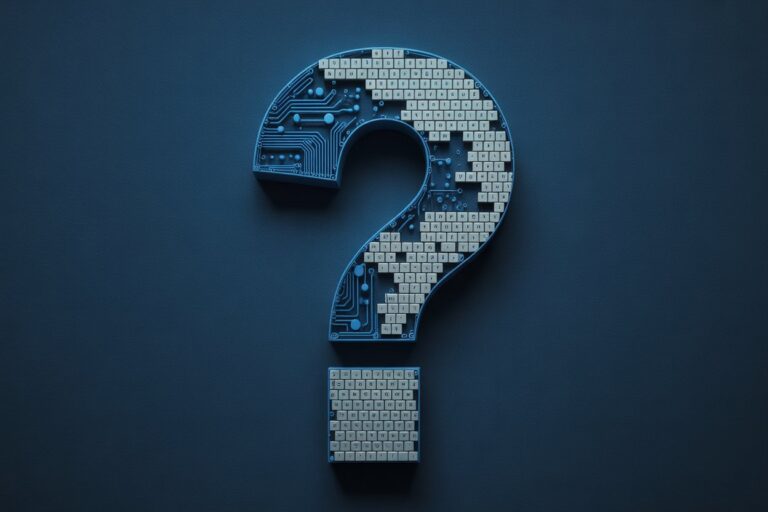Digging Through Decades of Court Records, AI is Discovering What Judges Missed
Machine learning systems are detecting systematic charging discrimination in millions of cases. If courts accept the evidence, jurisdictions with documented bias patterns could face a wave of constitutional challenges.
Can Statistical Patterns Become Legal Evidence?
In prosecutors’ offices across the country, algorithms are being trained to detect patterns humans overlooked. By ingesting historical charging data, plea bargains, and sentencing records, research groups are surfacing disparities that once blended into the routine of casework. The Stanford Open Policing Project has analyzed more than 200 million traffic stops, documenting disparate treatment patterns across jurisdictions. Stanford’s Computational Policy Lab and partners have helped standardize and study these records at scale. The central question for law is whether these statistical findings can move from policy debates into courtrooms as evidence that changes outcomes.
Algorithmic Archaeology: Excavating Bias in Charging
Digitization is finally catching up with decades of paper records. Universities and data labs are partnering with courts and agencies to structure archival data so that machine learning systems can detect anomalies across thousands of cases. Academic research has documented pilot programs where models trained on local records flagged that defendants from specific neighborhoods were charged more severely than similarly situated peers.
These results echo what advocates have argued for years, but they now arrive with reproducible code and preserved datasets. The legal hurdle remains connecting population-level disparity to an individual’s claim for relief.
Pattern Evidence Cannot Prove Individual Innocence
Two distinct uses of AI evidence often get conflated. One is bias detection, where algorithms identify discriminatory patterns across populations. The other is exoneration, which demands proof of actual innocence in a particular case. DNA can exclude a defendant with near certainty. An algorithmic audit can show that Group A was charged more harshly than Group B, but it does not by itself prove that a specific defendant’s conviction is invalid.
This distinction matters under equal protection doctrine. The Supreme Court has repeatedly held that statistical disparities are not enough on their own to prove a constitutional violation. In Washington v. Davis and McCleskey v. Kemp, the Court required proof of discriminatory intent, not just disparate impact.
Scholars are now asking whether algorithmic systems, which can be stress-tested and audited before deployment, change that analysis. See, for example, Harvard Law Review: Beyond Intent and a 2025 note arguing for modernized equal protection analysis for AI systems in the Harvard Journal of Law and Technology.
The Admissibility Problem: Getting Algorithm Audits Into Court
Defendants seeking to introduce algorithmic bias findings will likely proceed through post-conviction motions that allege constitutional violations. Admissibility turns on evidence rules. In federal courts, expert and technical evidence is screened under the Daubert standard; many states use Daubert, while some still rely on Frye. To clear these gates, algorithmic audits must be reliable, relevant, transparent, and reproducible, with preserved datasets and documented methods.
In practice, a defendant would likely file a motion for post-conviction relief under Rule 33 (federal) or state equivalents, arguing newly discovered evidence of systematic discrimination. The motion would need expert testimony from data scientists who could authenticate the audit methodology, reproduce the findings, and connect population-level patterns to the defendant’s specific charging decision. Without such expert support, which most public defenders lack resources to obtain, even compelling algorithmic evidence may never reach a judge.
Courts have already grappled with algorithmic tools in adjacent contexts. In State v. Loomis, the Wisconsin Supreme Court allowed a proprietary risk assessment in sentencing but warned judges not to treat it as determinative and flagged due process concerns about transparency. The case is summarized in Harvard Law Review.
Courts have also cautioned against mathematical mystique in criminal trials. In People v. Collins, the California Supreme Court reversed a conviction that leaned on misused probability reasoning, underscoring that statistical presentations must be rigorously vetted. And in the civil sphere, the Supreme Court recognized that regression evidence can be probative even if not every factor is modeled, see Bazemore v. Friday.
A recent controversy shows the stakes when algorithmic evidence enters the record. Reporting has scrutinized an investigative tool called Cybercheck that prosecutors used in several cases to analyze social media activity and predict criminal behavior. The tool’s reliability came under question when defense attorneys challenged its methodology and the scientific basis for its predictions.
Investigative reporting raised questions about the tool’s methodology and the scientific basis for its predictions, leading to scrutiny of its use in criminal proceedings. Such challenges illustrate why establishing rigorous validation standards matters before algorithmic findings reach juries. See Business Insider coverage for a detailed examination of contested AI evidence and the pressure it faces under adversarial testing.
Who Authenticates the Algorithm?
Courts trust evidence that can be authenticated and audited. With algorithms, the chain of custody runs through engineers, data scientists, and cloud infrastructure. Documentation requirements like the NIST AI Risk Management Framework emphasize provenance, bias testing, and reproducibility.
The United Kingdom has gone further for public sector tools with its Algorithmic Transparency Recording Standard and a growing set of records for justice agencies, including the CPS Correspondence Drafting Tool. These measures make it easier for courts and parties to reconstruct how an output was produced.
Global Standards and Comparative Pressure
Outside the United States, regulators are setting explicit guardrails for justice systems. The European Union’s AI Act treats many law enforcement and judicial tools as high risk and requires human oversight and fundamental rights impact assessments. In the United Kingdom, the Crown Prosecution Service has published an ethics and governance stance on AI use, with a clear human in the loop commitment, see CPS guidance. The UK Ministry of Justice has released an AI Action Plan for Justice and established a Justice AI Unit to coordinate responsible adoption across courts and prisons. These frameworks do not decide admissibility in U.S. courts, but they raise the baseline for transparency and documentation.
Operational Hurdles and Defense Capacity
Even if courts accept algorithmic audits in principle, defense teams need resources to contest or replicate them. Public defenders report difficulty obtaining source code, training data, and qualified experts to test tools used against their clients. See Jin and Salehi, CHI 2024 for a qualitative study of these challenges. Without capacity building, admissibility fights risk becoming unequal contests in technical fluency rather than neutral searches for truth.
The resource implications raise systemic concerns. If jurisdictions with documented discrimination patterns face waves of challenges, who pays for the expert witnesses needed to authenticate algorithmic audits? How do public defenders without data science budgets contest or replicate findings? Without addressing these capacity gaps, admissibility fights risk becoming contests in technical resources rather than searches for truth.
Where This Leaves Retrials
If an audit shows a durable pattern of discriminatory charging, it strengthens the argument for equal protection claims. But under current doctrine, courts still look for a link to the individual case. That is why case law on intent and proof remains central. The path forward likely combines clearer documentation of government AI use, rigorous validation protocols before deployment, and targeted litigation strategies that connect population-level disparity to specific decision points in a defendant’s file.
When and whether algorithmic bias audits will reach appellate courts remains an open question. The legal infrastructure exists: equal protection doctrine, expert evidence rules, and post-conviction relief procedures. What’s missing is the test case where a defendant has both compelling algorithmic evidence and the resources to litigate it through the appeals process.
The Uncomfortable Truth
AI may confirm what history has suggested: justice has not always been evenhanded. Whether courts will let statistical tools reopen closed chapters depends less on the technology than on judicial willingness to reckon with what the data reveals. The algorithms are ready. The legal system may not be.
My Take
This is yet another example of how AI can and will improve the justice system. For decades, bias hid in plain sight because no one had the time or computational muscle to see the patterns. Now, AI can comb through millions of charging and sentencing records to surface disparities that used to blend into the paperwork.
The same technology can be applied to current proceedings. Imagine AI models trained to flag inconsistencies in jury instructions, identify judges whose rulings deviate statistically from norms, or detect when plea deals disproportionately disadvantage certain groups. This is where “AI for justice” stops being theory and starts being infrastructure.
Of course, the challenge isn’t the math, it’s the mindset. Courts move slowly, and lawyers are cautious by design. But the data is there. The tools are here. What’s missing is the institutional courage to let algorithms shine light where humans have looked away.
Sources
- Stanford Open Policing Project – Findings and Analysis
- Stanford Computational Policy Lab – Criminal Justice Research
- Cornell Legal Information Institute – Daubert Standard
- Cornell Legal Information Institute – Frye Standard
- State v. Loomis, 881 N.W.2d 749 (Wis. 2016) – Full Opinion
- Harvard Law Review – State v. Loomis Case Analysis
- People v. Collins, 68 Cal.2d 319 (1968)
- Bazemore v. Friday, 478 U.S. 385 (1986)
- Washington v. Davis, 426 U.S. 229 (1976)
- McCleskey v. Kemp, 481 U.S. 279 (1987)
- Harvard Law Review – Beyond Intent: Algorithmic Risk Assessment
- Harvard Journal of Law & Technology – Modernizing Equal Protection for AI
- Cornell University – Public Defenders and AI in Court (CHI 2024)
- Business Insider – Cybercheck Investigation and Controversy
- NIST – AI Risk Management Framework
- European Commission – AI Act (Regulation 2024/1689)
- UK Crown Prosecution Service – AI Ethics Framework
- UK Government – Algorithmic Transparency Recording Standard
- UK Ministry of Justice – AI Action Plan for Justice (2025)
- UK Justice AI Unit
- Canada Charterpedia – Section 15 Equality Analysis
This article was prepared for educational and informational purposes only. It does not constitute legal advice and should not be relied upon as such. All cases, regulations, and sources cited are publicly available through court filings, government publications, and reputable media outlets. Readers should consult professional counsel for specific legal or compliance questions related to AI use in criminal justice.





